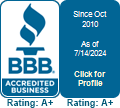Bathing can do more than refresh, cleanse and hydrate your skin. It’s also a great way to relax and decompress from a stressful day. And most importantly, taking the right kind of bath can help your body control Staph, MRSA and other pathogens on your skin.
Doctors often prescribe bleach baths and baths with chemically laden disinfectants to people with stubborn Staph and MRSA skin infections. While these MRSA baths and Staph baths may kill infecting bacteria on your skin, they can also kill off the good bacteria that help protect your skin. Bleach and toxic chemical disinfectants can also weaken your immune system, cause skin irritations and allergic reactions, cause damage to your eyes, and bog down your body’s ability to cleanse and detoxify.
Did you know there are natural and less toxic ways to add infection fighting power to your bath water? Read on for some of my favorite Staph bath and MRSA bath tips.
A soothing natural alternative
Bathing with natural mineral salts and bacteria-fighting botanicals is a non-toxic alternative to help control infecting skin bacteria. In particular, essential oils can provide antibacterial as well as soothing and calming benefits for your skin. Adding a high quality bath salt to the mix gives further benefits, including skin hydration, softening and rejuvenation.
Your skin is the largest organ on your body and is excellent at absorbing things. That includes any products you put on your skin. Your skin’s absorbing power is a great advantage for getting beneficial remedies into your body through bathing. Unfortunately, your skin will also absorb all the toxins and artificial chemical ingredients found in so many skin care and beauty products.
Bathing products
As with any product you put on your skin, quality, purity and toxicity are crucial. The key is to go as natural as possible to avoid artificial ingredients, impurities, additives and fragrances absorbing into your body.
There are many different kinds of bath salt products. A few good quality brands can be found at Whole Foods, Vitamin Cottage and other natural product dealers. Himalayan sea salts in particular lacks the modern contaminants, toxins and heavy metals found in freshly made sea salts. Dendritic sea salts and finely crystalized salts dissolve more quickly and completely in water.
There are also many brands of essential oils on the market. And most brands simply are not pure enough or strong enough for medicinal and therapeutic uses. As for essential oils, I only use the highest quality, therapeutic grade, E.O.B.B.D. oils for anything that touches my skin.
Staph bath how-to’s
Most bath salts come with a scoop and instructions for how much to use. As for bath duration, A 20 minute bath it typically enough to enjoy the benefits to your skin and get some good relaxation. As for frequency, daily baths are excellent if you have the time.
For essential oils, tea tree oil is a good option to start with because it’s mild yet strongly antibacterial. Other oils that can be beneficial in the bath are lavender, eucalyptus and rosemary. While oregano, thyme and a few other essential oils are strongly antibacterial, these oils can be very hot, irritating and sensitizing to the skin, especially over time, and are poor bath choices for newcomers to essential oils.
Most people start off using 2 to 5 drops of an essential oil per scoop of salt, or per bath. Up to 10 drops of sometimes used with milder oils such as tea tree, if well tolerated. As with any natural product, always reduce the amount, frequency of stop using it irritation, burning or allergies occur.
It’s always best to add essential oils to your bath salts for each use, not directly to your bath water or into the salt container. Oils added directly to the bath will simply float on the surface of the water. Adding the oils to the salts helps spread the oils slower and better through your bath. Also, the plastic containers that most bath salts come in may be incompatible with essential oils. Therefore, avoid adding oils to the bath salt container ahead of time.
For babies and small children, spot bathing may be a better option if essential oils are used. Spot bathing using a small basin and wet cloth makes it easier to protect sensitive areas from the bath water, such as the face, underarms and groin.
Bathing hygiene
If you have an active MRSA infection, be sure to clean out the tub before your friends or family use it. After the water drains, some of your skin bacteria are left behind on the bottom and sides. This will help prevent spreading your infection to others. For the same reason, don’t bathe in a dirty tub, as you don’t want to make your skin infection worse. It’s also best if you don’t share your personal items like your bath towel, razor, or wash cloths.
Bathing is a good addition to any Staph or MRSA control program. Bathing not only helps reduce bad skin bacteria, it’s also a great stress reliever and it can make your skin look younger too.
To your best health,
Michelle
Microbiologist and Natural Health Expert





